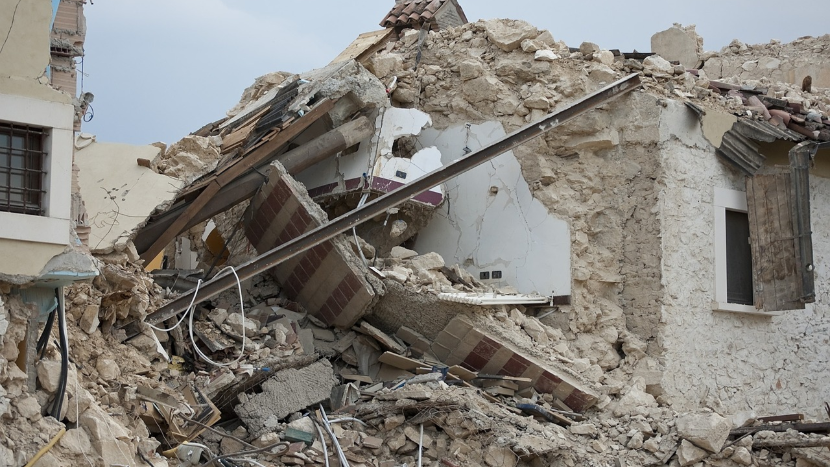“Earthquakes don’t kill people. Buildings kill people.” — Wendy Bohon, geologist
How many times have you been in a hazard review discussing the potential for a particularly severe event when someone asserts, “Well, I’ve never seen anything like that happen.” As though their proclamation of “never” settles the question.
I sometimes ask them how long they’ve been on the job. Their response varies. 10 years. 20 years. 40 years. It doesn’t matter.
“Our tolerable frequency for a fatal event is once every 10,000 years. How much should we count your ‘never’ against that?”
Then we get on with trying to estimate the frequency at which the event will occur, so we can do a risk assessment.
Earthquake in Morocco
On Friday night, September 8, 2023, a 6.8 magnitude earthquake struck in the Atlas Mountains of Morocco. The epicenter was about 70 km (43 miles) south of Marrakesh and left almost 3,000 people dead. As is often the case after disasters, people wanted to know why. Why an earthquake there? Why so many dead? Reporters sought out experts who tried to explain.
Reporters from the Washington Post led their article, “What caused the Morocco earthquake and what made it so deadly?”, with the statement that massive earthquakes were “unusual for [central Morocco] – and that’s what made it so deadly.” But then they went on to describe a deadly earthquake in nearby Agadir that killed thousands on February 29, 1960, and showed a map with 15 earthquakes of 4.5 magnitude or greater through the Atlas Mountains over the past 100 years. The map also showed dozens of earthquakes in northern Morocco. So, it is not as though earthquakes were unheard of in the region.
Because earthquakes are a known hazard in the region, new buildings are constructed to higher standards. The Washington Post article noted that in Marrakesh, newer construction stayed standing even as the earthquake reduced older buildings to rubble. It was the collapse of these older buildings that resulted in deaths of so many, most of whom were home sleeping when the earthquake struck.
What Does “Unusual” Mean?
The recent Marrakesh earthquake was described as “unusual,” despite the fact that there have been over a dozen massive earthquakes along the Atlas Mountain fault line over the past hundred years. In the U.S., most people are aware of the earthquake hazard posed to the residents of California. Most can even name one of the faults: the San Andreas fault, which runs almost the entire length of California. No one is surprised when there is an earthquake in California. It wouldn’t be considered “unusual.”
But other regions in the United States are vulnerable to earthquakes. The U.S. Geological Survey has a lot of information about earthquakes, including the map shown in Figure 1, which shows earthquake zones in terms of frequency of damaging earthquakes. The earthquake zone that comes as no surprise is the zone where the Pacific tectonic plate and the North American plate are colliding. That zone is not limited to California, but extends south into Mexico and north, through Oregon, Washington, British Columbia, and into Alaska. It is part of the bigger “Ring of Fire”, a horseshoe shaped zone that goes from the southern tip of Chile in South America, up through California and the Aleutian Islands, through Japan and the Philippines, and around the eastern coast of Australia. No one would consider earthquakes in any of these zones “unusual.”

Figure 1. The USGS Estimate of the Frequency of Damaging Earthquakes in the United States
What surprises many is the zone of high earthquake activity in the middle of the United States, centered in the bootheel of Missouri. Locally, people still talk about the New Madrid earthquakes of December 16, 1811, January 23, 1812, and February 7, 1812. Estimates of the magnitude of these earthquakes range from 7.2 to 8.6, and the fact that the Mississippi River ran backwards.
Earthquakes continue to occur along the New Madrid fault. As recently as Saturday, September 16, 2023, there was a 2.8 magnitude earthquake centered near New Madrid. Didn’t hear about it? Partly, that is because a 2.8 magnitude earthquake is not particularly destructive. More importantly, though, it’s because the people in the region of the New Madrid fault take the threat of earthquakes seriously and build accordingly. Not just in New Madrid County, Missouri, but throughout the Missouri bootheel, and into Illinois, Kentucky, Tennessee, and Arkansas.
Are You As Ready As You Need To Be?
For organizations with risk tolerance criteria, even an event that causes multiple fatalities as often as once a century is an event that is unacceptable, intolerable. Hurricanes, tornadoes, floods, earthquakes are all events with the potential to cause massive damage and multiple fatalities, and we know where they happen. We don’t know when they will happen, so we must be prepared for them to happen at any time.
Are you in an earthquake zone? Was your facility designed to withstand an earthquake or other catastrophic event? It doesn’t matter if it was built to codes in place at the time if the codes don’t reflect the hazards that exist. It doesn’t matter while you’ve been there, you’ve never experienced a catastrophic event. Earthquakes don’t care about “grandfather clauses.” Neither do hurricanes, tornadoes, and floods. As a facility, you have no control over when these events occur, but you do have control over how your facility will respond to them. Are you satisfied with how your facility will respond? Perhaps it’s time for some retrofits.
